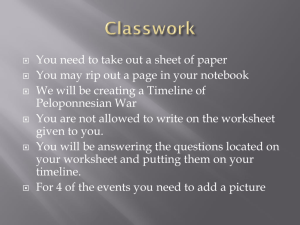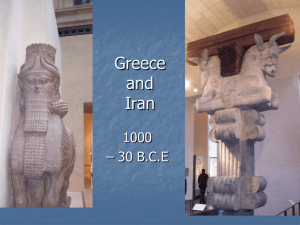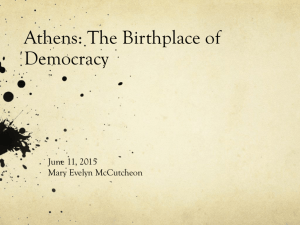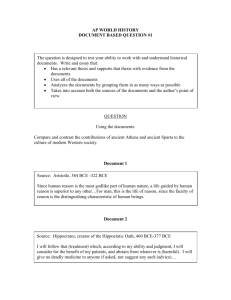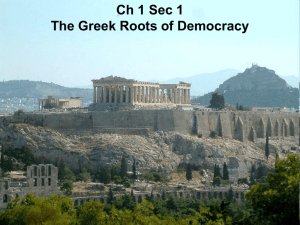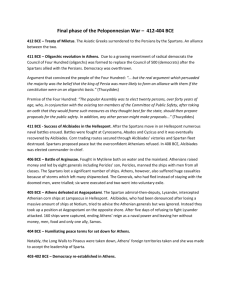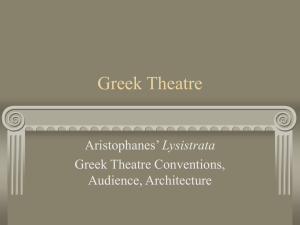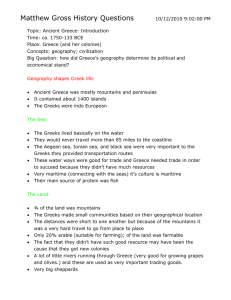PowerPoint Presentation - Aristotle, Theatre Spaces
advertisement
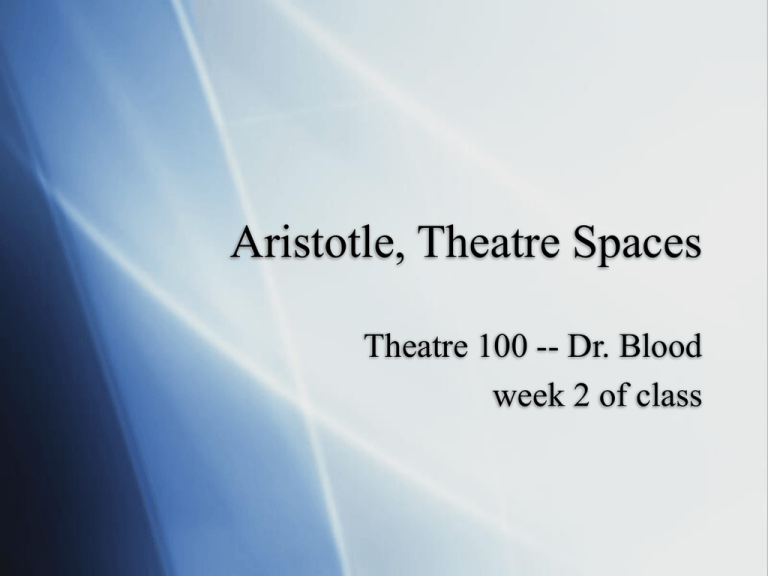
Aristotle, Theatre Spaces Theatre 100 -- Dr. Blood week 2 of class Definitions - Theatre Spaces Theatre must have a live performer and a live audience. That’s it. Proscenium stage Thrust stage Arena stage Found spaces Environmental staging Audience Forms a collective identity Cyclic interchange with performers Different behaviors expected in different times, performance styles Critic as privileged audience member Peer reviewers for grants Academic critics Aristotle’s Poetics C. 350 BCE Aristotle’s Poetics C. 350 BCE; 1st extant work of literary or artistic criticism Focus on tragedy; did he also write ones on comedy and epic poetry? Imitation is the basis of art (from Plato); drama is imitation of action Definition of tragedy Six Elements of Drama In order of importance to Aristotle: Plot Character Thought (theme) Diction (artistic use of language) Song/Music Spectacle Plot Elements Beginning, middle, end structure Unity and probability A complex vs. a simple plot is preferred; this includes peripety (reversal) and anagnorisis (recognition) Single vs. double (no subplots) Goal (telos) is catharsis - gives drama a social function in the polis Character elements Characters should also be probable or necessary Hero Good Aim at propriety True to life Consistent Hamartia (tragic flaw): meaning much debated Structure of Tragic Plot Prologue Parodos 3-5 Episodes (scenes) alternate with Choric parts Exodus Commos (optional) joint chorus and character section Old Comedy 5th century BCE Part of City Dionysia from 487 BCE Political and social satire Personal attacks, author’s POV Aristophanes (c.448-380 BCE) bridges old and middle comedy; Lysistrata (411 BCE) is old comedy Structure of Old Comedy “Happy idea:” absurd but clear relevance to contemporary issue Prologue Chorus enters and debates the happy idea (agon) with each other and characters Parabasis choral section in the middle, direct address to audience, Scenes of adopting the happy idea Komos - reconciliation, often exiting to feast or revels Peloponnesian War 431-404 BCE Background of Aristophanes’ play: 20 years into the war Athens (Delian League) vs. Sparta (Peloponnesian League) 1st phase (10 yrs) Athens’ navy raids coasts, Sparta repeatedly invades Attica Peace of Nicias, 421 2nd: Athens launches attack on Syracuse in 415, whole force destroyed 413 Persian joins Sparta, they chip away at Athens’ allies Destroy navy at Aegospotami, 405 Results of Peloponnesian War Massive human cost Tremendous economic cost; Athens never regains prosperity Democracy vs. oligarchy Warfare broke prior rules: devastation of whole cities, crops and countryside, broken religious and cultural taboos Historians: Thucydides, Xenophon How are these real costs lampooned by Aristophanes?
